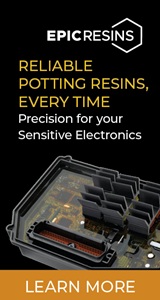|

|
|
| Ask the Experts | ||||||||
|
||||||||
|
October 9, 2025 - Updated January 11, 2017 - Originally Posted IPC-A-610 Class 3 - IPC-A-600 Class 2If the PCB Assembly inspection requirement is IPC-A-610 Class 3, does it mean that the PCB inspection IPC-A-600 also has to be IPC Class 3? My understanding is that they are 2 different standards. PCB can be based on IPC-A-600 class 2, but the entire Assembly can still be made based on IPC-A-610 Class 3. S.R. |
||||||||
| Expert Panel Responses | ||||||||
|
Yes, they are different requirements. If we can make the case that a PWB designed and inspected to IPC-A-600 Class 2 will meet the reliability requirements of the application, and our customer accepts this, then there is no reason that we can't take this approach. Going one step further, we could potentially exempt only certain areas and/or features of a PWB design from Class 3 requirements, e.g. inner layer spacing under high-density area array components. Taking an approach of designing to meet Class 3 where possible, and accepting Class 2 for a small subset of features, with confirmatory testing to validate reliability, can be a way to cost-effectively meet reliability requirements.
Process Engineer Astronautics Fritz's career in electronics manufacturing has included diverse engineering roles including PWB fabrication, thick film print & fire, SMT and wave/selective solder process engineering, and electronics materials development and marketing. Fritz's educational background is in mechanical engineering with an emphasis on materials science. Design of Experiments (DoE) techniques have been an area of independent study. Fritz has published over a dozen papers at various industry conferences.
If the end product is intended to be a class 3 product, then every step of the way (all standards used in the design, development, substrate, assembly, inspection, and testing) need to be completed to the class 3 level. If the foundation is class 2, then you can't expect the finished assembly to be any better than the weakest point.
Manager of Assembly Technology IPC Kris Roberson has experience as a machine operator, machine and engineering technician and process engineer for companies including Motorola, and US Robotics. Kris is certified as an Master Instructor in IPC-7711 / 7721, IPC A-610 and IPC J-STD 001.
Yes, they are two different standards, the IPC-A-610 does reference the 600 in many spots, but here is reference I believe is relevant to your question: As stated in IPC-A-610 Revision F, page 1-3, section 1.2 Purpose, second sentence: In order for the user to apply and use the content of this document, the assembly/product SHOULD comply with other existing IPC requirements, such as IPC-7351, IPC-2220 (Series), IPC-6010 (Series) and IPC-A-600. If the assembly does not comply with these or with equivalent requirements, the acceptance criteria SHALL be defined between the customer and supplier. While this doesn't specifically say you have to start with Class 3 materials if you want to build a Class 3 product, I believe it's implied and that's how I teach my CIS students. I look at it that you can't be any better than what you start with. So, if you have all Class 2 materials, and they do not meet even one Class 3 requirement, let alone all of them, you cannot build to Class 3. It's similar to RoHS, if you have any Lead (or other restricted substance) above the allowable limit that does not have an exception, you simply cannot certify that your product meets RoHS in its entirety. It's an "all or nothing" scenario.
Manufacturing Engineer Esterline Interface Technologies Mr. Hughes has been in the electronics manufacturing field for 20 years. Operating the processes and as a manufacturing engineer for the last 14 years. He is also a CIT as well as an SMTA Certified Process Engineer.
"If the PCB Assembly inspection requirement is IPC-A-610 Class 3, does it mean that the PCB inspection IPC-A-600 also has to be IPC Class 3?" No. However, having a PCB compliant to A-600 Class 3 reasonably improves your odds of yielding a PCA compliant to A-610 Class 3. And ditto for the design (we're often asked to build a Class 3 PCB from a design that fails Class 2).
President Circuit Connect, Inc. Bob has been in PCB design and fabrication since 1976. He has held elected positions with the SMTA, is a member of the MSD Council, has served as a committee member for various IPC standards and is a Certified IPC Trainer.
In short - yes you can have a class 2 PCB and class 3 PCBA. Keep in min that both 610 and 600 are inspection standards, not design or workmanship standards. Meaning if you want to meet class 2 or 3 in either, the design has to be able to achieve the desired standard. It is very common to have a PCB be designed to meet IPC-A-600 class 2 and still achieve IPC-A-610 class 3 assembly. However the board designer needs to be aware of how the design is affecting the final assembly. E.g. IPC-A-610(F) 8.3.1.3 - for class 2 your pads need to be able to accommodate a minimum end joint that is 50% the width of the component, however for class 3 it is 75%. The board design needs to be able to achieve this result.
Director of Corporate Quality Assurance Delta Group Electronics Inc. Tod has been working in the Aerospace Electronics Industry for 25 years, beginning with 4+ years working for PCB fabricator ending as the Quality Manager and 20 years with Delta Group Electronics Inc. an AS9100 registered electronics contract manufacture. Currently position is Director of Corporate Quality Assurance.
Reader Comment
Materials have to be the same class for all the standards. And the explanation for that is because all the standards are linked by product classification and also by the levels of acceptability, even if the standard have different number.
Andres Rojas, AIM
The IPC-600 is an step before that the IPC-610. The IPC 600 includes criteria for a virgin PCB before assembly. that means that the criteria was developed to meet the IPC-610 and the classification. If this customer inspect the PCB using a lower criteria, the results will be that the final assembly cannot meet the class 3 criteria of IPC-610. Or vice versa if the customer uses a high classification the results will be unnecessary cost of the process or materials because the final customer is paying a lower class. When a classification for a product was defined by the customer, by contract or internally applies for all the standards. In this case if a class 3 product defined by the customer, contract or internally, all materials, equipment and process has to conform to this classification. If acceptance of material, process, equipment with lower or other criteria, the results will be a wide process, this can lead to failures, rejections or scrap. No, No, No. If the contract states the product is to be inspected to IPC-A-610 Class 3, then that is what you do, inspect the product to Class 3 requirements as defined in IPC-A-610. This however, in no way means or implies the product is a Class 3 product, it only means the visual appearance of that product was inspected to the requirements of Class 3. So the answer to the following questions is NO, as the board was not built to IPC-A-600 Class 3 requirements. This I define later in this memo. If the PCB Assembly inspection requirement is IPC-A-610 Class 3, does it mean that the PCB inspection IPC-A-600 also has to be IPC Class 3? As for this following question the entire assembly can never be classified as Class 3 unless it was built to class 3 requirements, there is no other way. My understanding is that they are 2 different standards. PCB can be based on IPC-A-600 class 2, THAT IS TRUE but the entire Assembly can still be made based on IPC-A-610 Class 3, BUT IT IS NOT A CLASS 3 PRODUCT. For an assembly to be built to Class 3 it must be defined as such on the procurement document or contract to the board shop. The following identifies some of the elements which need to be specifically defined. This include copper plating thickness in the holes, annular ring requirements, multilayer spacing requirements, manufacturing process controls, facilities process controls just to mention a few. This is a complicated process and to use an analogy that I use in my classes, you cannot put Pirelli tires on a Volkswagen and call it a Ferrari, which is what you are trying to do by inspecting the assembly to class 3 requirements and then making the assumption it is a class 3 product. It is not.
Vice President, Technical Director EPTAC Corporation At EPTAC Corporation, Mr. Lambert oversees content of course offerings, IPC Certification programs and provides customers with expert consultation in electronics manufacturing, including RoHS/WEEE and lead free issues. Leo is also the IPC General Chairman for the Assembly/Joining Process Committee.
One question we need to answer first is what is the end use of the assembly that you are building. If it is Class 2 or Class 3 then inspect according to the end user. Remember a defect in Class 2 implies also a defect in Class 3.
Senior Manufacturing Engineer Northrop Grumman Edithel is a chemical engineer with 20 year experience in manufacturing & process development for electronic contract manufacturers in US as well as some major OEM's. Involved in SMT, Reflow, Wave and other assembly operations entailing conformal coating and robotics.
Great question, many times I am asked about mixing and matching between IPC Class 3 and 2 requirements across specifications (e.g., 600 and 610). Janice Pobanz, IPC CIT & NASA Training Specialist at IEC Electronics Albuquerque, New Mexico and myself discussed your concern and recommend that you always recognize the first issue is the customer. As the IPC standards state, "it is the customers responsibility to identify the class to which the product is evaluated". The second issue to address is the statement in the IPC-A-600 document under paragraph 1.4 Classification which states "This standard recognizes that electrical and electronic products are subject to classifications by intended end-item use." So, if the end item use is a Class 3 product then Class 3 requirements are applied from the board manufacture to the completed assembly. The third issue would be the definition for the three classes of product. Again using "end item use" as a guide the definitions of the classes is applied for each level of acceptance. We hope this advice helps you make the right decision. Thank you Janice for contributing to Ask the Expert.
Fellow Raytheon Mark has over 35 years of experience in electronics fabrication, quality, and reliability while working for Raytheon RMD, IEC Electronics, GE, Motorola, ORS, etc. He has most recently taken the role as a Fellow at Raytheon in Tucson, AZ; prior to that, he established IEC Electronics Analysis and Testing Laboratories (IATL), LLC in Albuquerque, NM, for electronics and material analysis testing in the military, medical, and industrial industries. His expertise includes PCB, PCBA, components, and analytical and electrical analysis techniques.
|
||||||||
| Submit A Comment | ||||||||
|
Comments are reviewed prior to posting. You must include your full name to have your comments posted. We will not post your email address. |
|
Free Newsletter Subscription
Circuitnet is built for professionals who bear the responsibility of looking ahead, imagining the future, and preparing for it. Insert Your Email Address |
|

|










